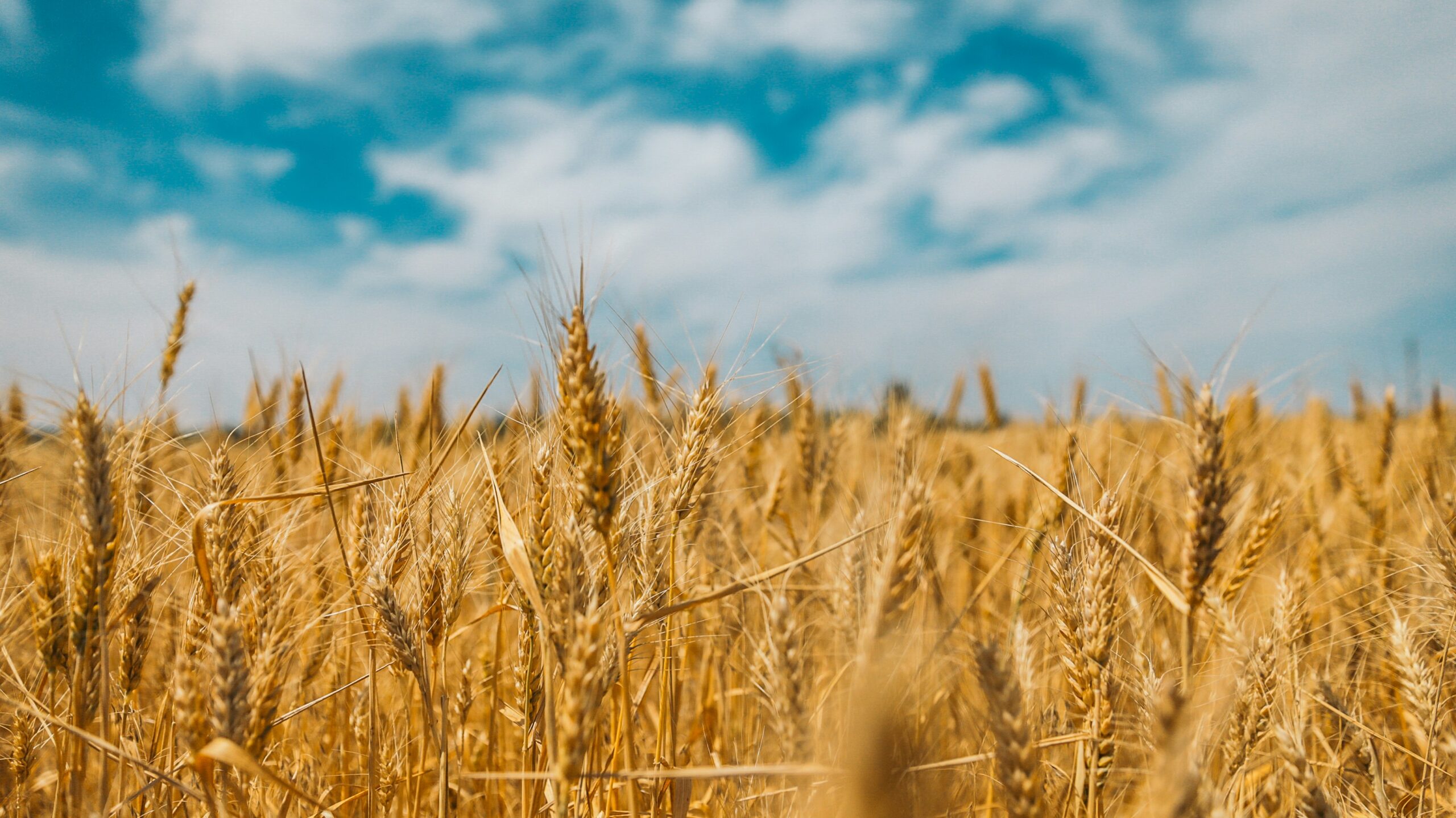Wheat cultivation is one of the most important methods of agriculture across the globe since it is the basis of the food safety of billions of individuals.
Being a major crop, wheat provides humans with carbohydrates and proteins. It is cultivated on a large scale in various climatic areas, with special attention given to the temperate areas.
The second most significant cereal crop of India after rice is wheat, which is extremely prominent in the agricultural economy of the country and the food supply system.
Table of Contents
Origin and Importance of Wheat Cultivation
One of the oldest known crops to be cultivated is wheat, which is believed to have originated in the Fertile Crescent region (encompassing present-day Iraq, Syria, and Turkey) approximately 10,000 years ago.
It is now cultivated in more than 120 countries and is the primary ingredient in an innumerable number of food items like bread, pasta, biscuits, and chapati.
Its versatility in various climatic conditions and nutritional value make it essential in both developed and developing countries.
About the Wheat
- The Botanical Name of Wheat is Triticum spp.
- The inflorescence of wheat is the Spike/Ear,/Head.
- The origin of Wheat is South West Asia(Afghanistan), and Durum originated from Ethiopia.
- Family of Wheat is Poaceae(Graminae).
- The type of Fruit of Wheat is Caryopsis.
- The Test Weight of Wheat is 40g, and the Test weight of Phalaris Minor is 2g.
- It is a Self-Pollinated crop(Cleistogamy).
- Germination=Hypogeal.
It is the king of all the cereal crops. Its contribution is maximum in the Green Revolution. Wheat is most widely consumed in India after Rice.
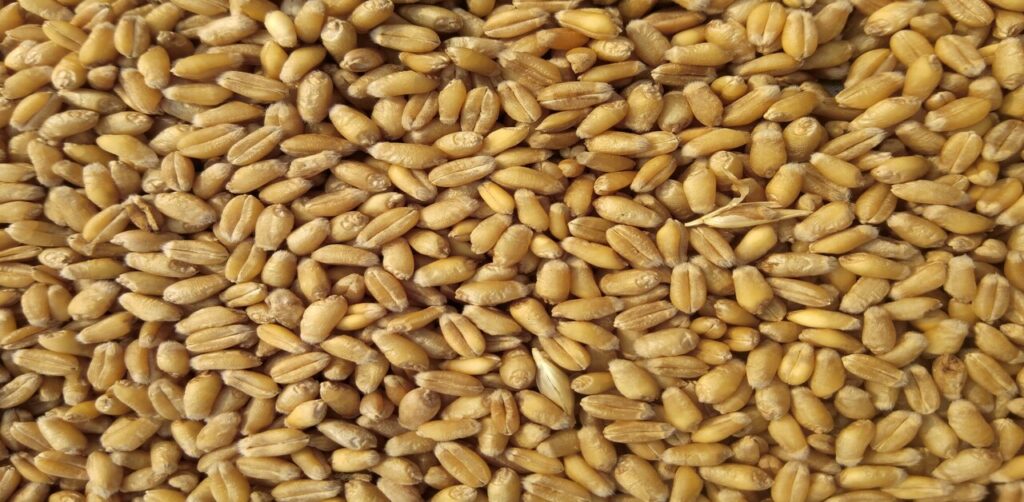
Food Value of Wheat
- Fat=1.5%.
- Protein Content=11.8(12)%.
- Wheat Protein is known as Gluten(Glutenin+Gladin).
- Gluten is somewhat harmful to children.
- Wheat is rich in niacin and thiamine.
- Celiac disease is caused due to gluten in human beings.
Institutes
- Directorate of Wheat Research-Karnal(now IIWR–Indian Institute of Wheat & Barley Research) in 1978.
- International Maize and Wheat Improvement Centre (CIMMYT)-Mexico in 1966.
- Mexican wheat was developed in CIMMYT(Mexico) by Dr. Norman E. Borlaug.
The Indian Government imported 100 kg of wheat (Sonora 64, Sonora 63, and Lerma Roja ) of a single gene in 1963 with the help of the Rockefeller Foundation.
Distribution of Wheat
In World
- Area-China>India.
- Production-China>India.
- Productivity-UK.
In India
- Area- Uttar Pradesh>Punjab.
- Production-Uttar Pradesh>Punjab.
- Productivity-Punjab.
Climatic Requirements for Wheat Cultivation
Wheat is a Rabi crop, which grows during the winter season and is harvested in the summer.
The optimal temperature at which it grows is between 10 °C and 25 °C. It needs a cool climate in the growing season and a warm and dry climate during harvest.
The crop thrives well in areas that receive at least 50-100 cm of precipitation annually, but irrigation can be used in areas with lower precipitation.
During flowering, frost can drastically lower yields, whereas during maturity, heat may cause losses. It is a C3 and long-day plant. The longitudinal section of wheat is called the Aleurone Layer.
If you are interested in buying a book of “The Psychology of Money by Morgan Housel, you can click here.
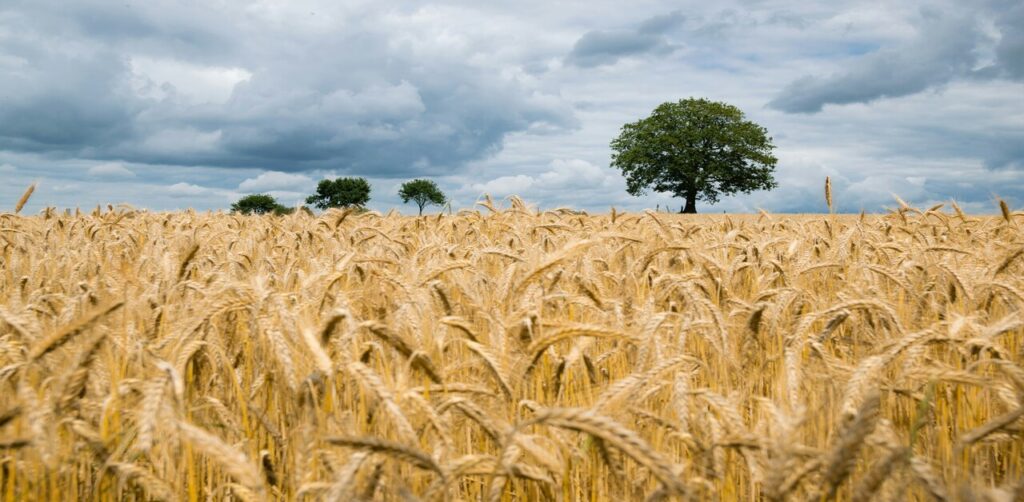
Soil Requirements for Wheat Cultivation
Wheat also grows best in organic-rich, clay-loamy to well-drained sandy loam soils.
The soil must be of neutral to slightly alkaline (6.0-7.5) pH to grow well.
Poor drainage soils, which are heavy, cannot be applied as waterlogging negatively interferes with the growth of roots.
Good land preparation will provide sufficient seed to soil contact and germination. The heavy black type soil is suitable for durum wheat.
Land Preparation and Sowing for Wheat Cultivation
The field should be well ploughed and leveled before sowing. Harrowing after two or three ploughings assists in attaining a fine tillage.
The timing of sowing is usually in the months of late October to December, depending on the area.
Sowing is done through drilling or broadcasting. Normal sowing has a seed rate of approximately 100-125 kg/ha.
Fungicides like carbendazim or thiram that are applied to the seed during treatment are necessary to prevent seed-borne diseases.
The optimal depth of seed should be approximately 4-5 cm, and adequate spacing will guarantee proper development of plants and easy administration.
Irrigation Management for Wheat Cultivation
Wheat is neither water-sensitive nor water-resistant, and it is very important to have irrigation on a timely basis so as to have a good yield.
As a rule, 4 to 6 irrigations will be enough throughout the crop cycle.
- Wheat requires 450-650 mm of water.
- 6 Irrigations are required for a good yield.
The term CRI stands for “Crown Root Initiation“. The term was given by BL Bhardwaj.
The following are the crucial steps of irrigation:
- Crown Root Initiation stage (20–25 days after sowing)-It is a very important stage of irrigation.
- Late Tillering stage(45-50 days after sowing)
- Late Jointing(65-90 days after sowing)
- Flowering stage(85–90 days after sowing)
- Milk stage(110–105 days after sowing)
- Dough ripe stage(115–125 days after sowing)
Over-irrigation must be eliminated because it can cause fungus and plant lodging.
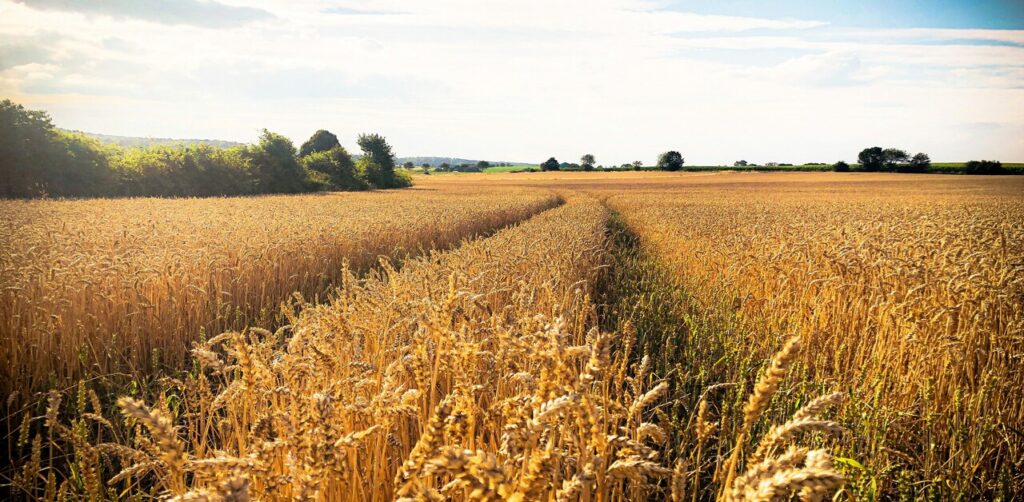
Nutrient Management for Wheat Cultivation
The application of fertilizers is significant in ensuring increased productivity.
Average doses of nitrogen of 120 kg/hectare, phosphorus of 60 kg/hectare, and potassium of 40 kg/hectare are recommended.
Fifty percent of nitrogen and the entire amount of phosphorus and potassium ought to be administered at the sowing stage, and the other half of nitrogen at the phases of tillering and booting.
The addition of organic manure or compost also improves soil structure and fertility.
Weed and Pest Control in Wheat Cultivation
Weeds also raid plants of wheat in terms of nutrients, light, and water, and hence lower yield.
Such common weeds as Phalaris minor (Canary grass) and Chenopodium album (Bathua) are involved.
They can be controlled by using chemical weedicides such as Isoproturon or Clodinafop.
The health of crops can be affected by pests, e.g., aphids and termites; by disease, e.g., rust, smut, and blight.
It has to be an integrated pest management (IPM) approach that involves crop rotation, resistant varieties, and a prudent use of pesticides.
Harvesting and Post-Harvest Management for Wheat Cultivation
Wheat is prepared to be harvested when the grains start to be hard and also when the plants become golden-yellow. The harvesting period of between March and April.
Late harvesting will cause the shattering of the grains, whereas early harvesting will cause immature grains. It is harvested at 20-25% moisture content in grain.
The crop is threshed and cleaned after harvesting, and dried, after which it is stored. Pest infestation and spoilage are avoided by proper storage in a dry environment.
Its storage moisture level is 10-12%, the shelling percentage of wheat is 60% and Milling is 70-74%.
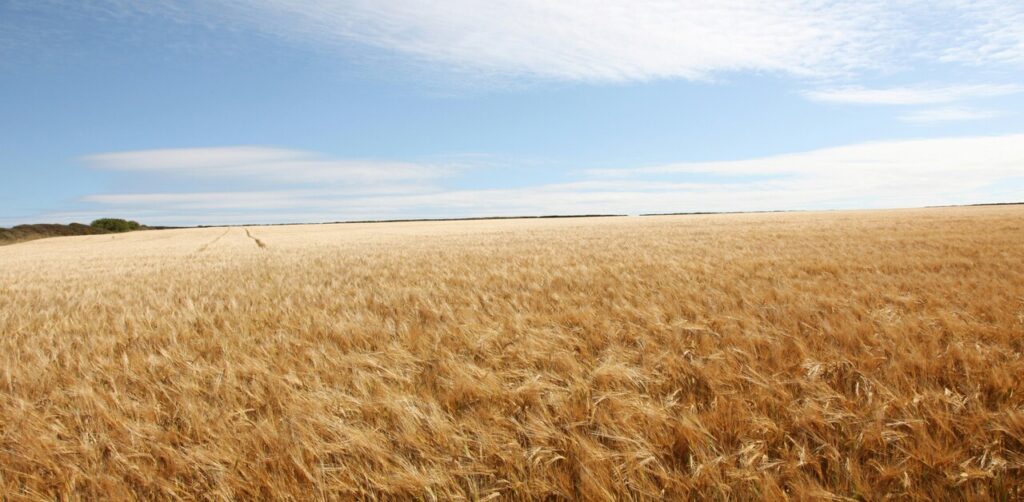
Challenges in Wheat Cultivation
Although wheat is a worldwide significant crop, there are several challenges in wheat production:
1. Climate Change: Increased temperatures, precipitation, and droughts impact wheat production and quality. The stress of heat during the grain-filling phase is disastrous.
2. Water Scarcity: Over-irrigation in the larger wheat-producing areas is using the groundwater, and there is a question of sustainability.
3. Soil Degradation: This is caused by the continuous farming of wheat without adequate crop rotation and leading to the reduction of soil fertility and the increase of salinity in certain regions.
4. Pests and Diseases: New rust and other fungal diseases are coming up, and they may cause large-scale damage to crops.
5. Poor Productivity in certain areas: Poverty denies access to good-quality seeds, fertilizers, and new machinery, resulting in low yields in small and marginal farms.
6. Market Uncertainties: Unpredictable market prices and lateness in procuring products for government programs often create uncertainty for farmers.
7. Post-Harvest Losses: There is an excessive loss of grains through pests and moisture as a result of poor storage and handling practices.
All these issues can be overcome with the help of technological innovation, environmentally friendly farming, and effective policy assistance.
If you want to read an article about the Rabi Crops in detail, you can click on it.
Conclusion
Wheat cultivation is not only an agricultural practice but also the source of livelihood for millions of farmers and consumers across the world.
As population and food demand rise, sustainability in the production of wheat is critical for the world’s food security.
Through scientific methods of farming, effective irrigation, and environmentally friendly methods of controlling pests, the farmers may not only maximize the produce but also ensure that the soil is healthy even in the future.
In the coming years, wheat will remain a major part of the human diet and the agricultural sector.

